Today, I am going to share with you something that may be of interest to everyone - Blue Light. Recently, this has been given much attention because of the multiple studies conducted which seek a cause-effect relationship of blue light and human physiologic responses.

What is Blue Light?
In Physics we were taught that light travels in the form of waves. It is a part of a large spectrum known as the Electromagnetic Spectrum along with gamma rays, x-rays, UV rays, infrared, microwave and radio waves. I am sure we are familiar with some of these. X-rays are common diagnostics procedures, UV rays are dreaded by Filipinos for their ability to tan, microwaves allow us to heat our food, radio waves make it possible to listen to your favorite station.
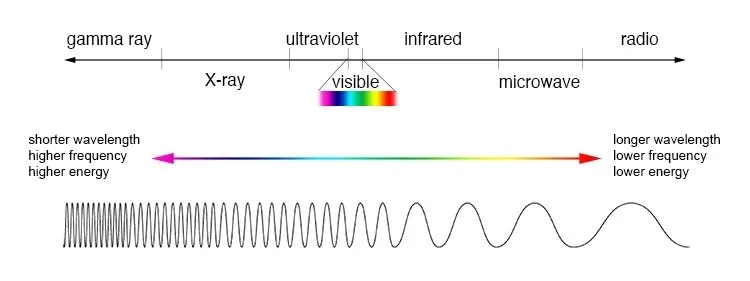
Now along with those waves is visible light. This is the light emitted from the sun or about any other place making it possible for us to see colors. Sunlight is composed of the colors of the rainbow - red, orange, yellow, green, blue, indigo and violet light which combines to form white light. I find it really amazing how each of the colors of the rainbow is from a single ray of sunlight separated by a medium. Nature is so amazing, don't you think? Separately, each of the colors of visible light corresponds to a specific wavelength with varying energies. This is where our topic about blue light comes in.
If you acquaint yourself with the electromagnetic waves along the red end portion of the spectrum of light, we can see infrared rays, microwaves and radio waves. It is noticeable that these are used in daily life and requires no specific protection because they have longer wavelengths, low frequencies, and therefore lower energy. However, looking at the blue end of the spectrum, we can see very high frequency and high energy waves. We may recall how we protect ourselves with sunblock from UV rays, we makes sure to wear a lead apron when exposure with X-rays, and know for a fact that gamma rays can kill.
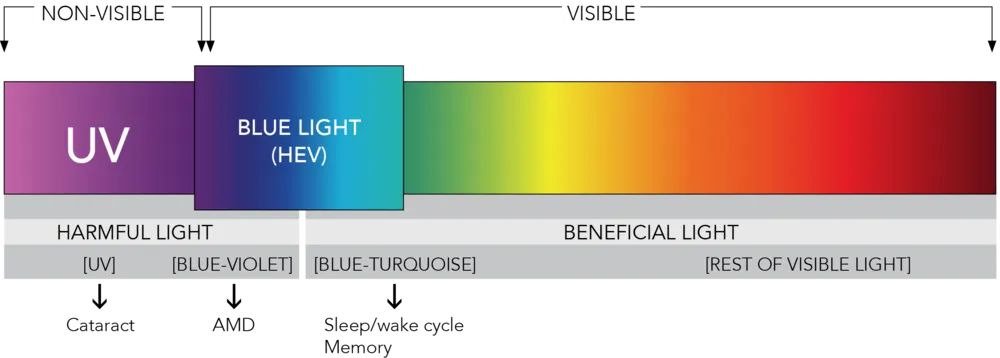
Blue rays, therefore, have shorter wavelengths and more energy. This is the reason why exposure to it needs to be limited just as much as we need to limit UV and xray exposure. In the modern world, there is an increasing level of demand for efficient lighting which can be found in LED lights and compact fluorescent lamps (CFLs)—most of which emit a high level of blue light. CFLs contain about 25% of harmful blue light and LEDs contain about 35% of harmful blue light. In fact, light which looks white can have a large blue component, which can expose the eye to a higher amount of wavelength from the blue end of the spectrum.
Blue Light and Sleep
I have noticed in the past few days that sleeping has been slightly difficult after using my laptop or phone for long periods of time. I found it harder to sleep when I work with my electronic devices late at night. While this may be beneficial for me when I am doing something very important, it takes a toll on my body's sleep-wake cycle making my sleeping patterns irregular.
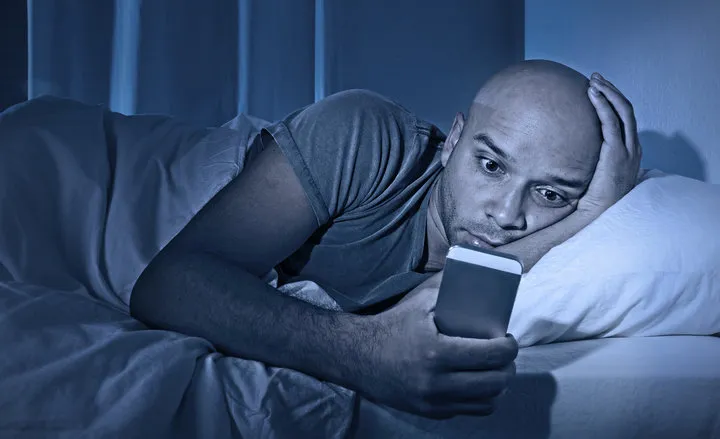
This can be explained by the high levels of blue light emitted by our electronic devices. BWith high levels of blue light, our eyes are tricked into feeling that it is still daytime. It has been found that it affects the body’s circadian rhythm or our natural wake and sleep cycle. This is perfectly understandable as our bodies depend on the light from the sun to dictate night from day. With blue light disrupting this, our normal sleep-wake cycle ceases to perform its function leading to insomnia and general fatigue due to lack of sleep.
Blue Light and Eye Strain
If you are within my locality in Cebu, you may have been afflicted with the consecutive two days of no classes and no work because of typhoon Basyang. When the typhoon was at its peak, gushing winds as high as 45 km/h, I made sure to make the most of cool weather and basked in my own time with movies and TV shows. I had watched a total of 3 one hour and a half TV show in a single day. I noticed how at the end of the day, it felt like my eyes were dry, droopy and heavy. I believe this had something to do with lack of activity as well as exposure to my screen.
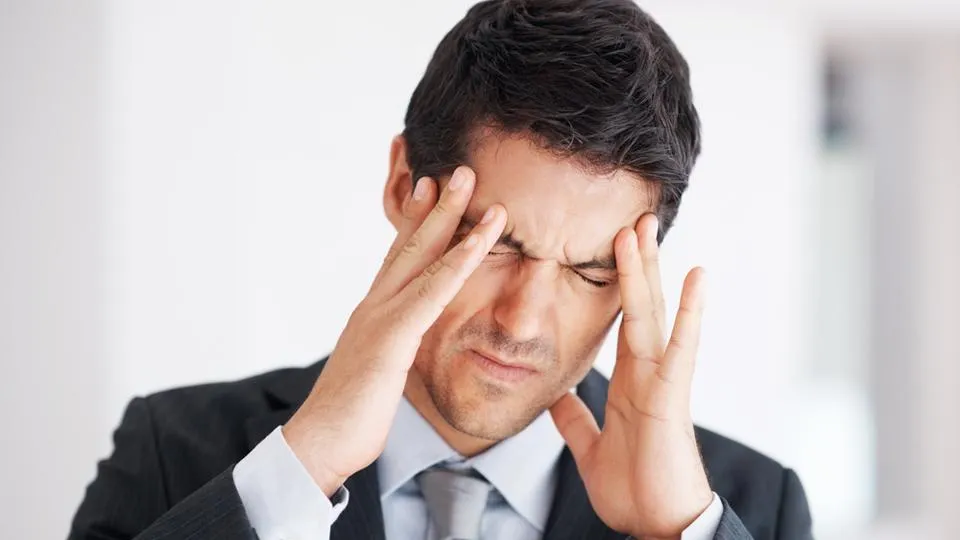
I looked it up as I was concerned with myself and found out that continued exposure to blue light over time could lead to damaged retinal cells. The retina, for the information of everybody, is the outermost layer of the eye. This can cause vision problems like age-related macular degeneration or decreasing visual acuity. In some cases, it could lead to blindness. That definitely pulled me back.
Filtering Blue Light in Windows 10
Luckily for me, I had a Windows 10 Operating System which now features a Night Light Mode at the bottom right portion of the screen along the notification button. You can simply turn it on to decrease the amount of blue light your screen emits. But if you want to customize it, you could press the right click button of your mouse and Go to Settings.

Proceed to the "Display" panel of your settings menu and press on the "Night Light Settings"
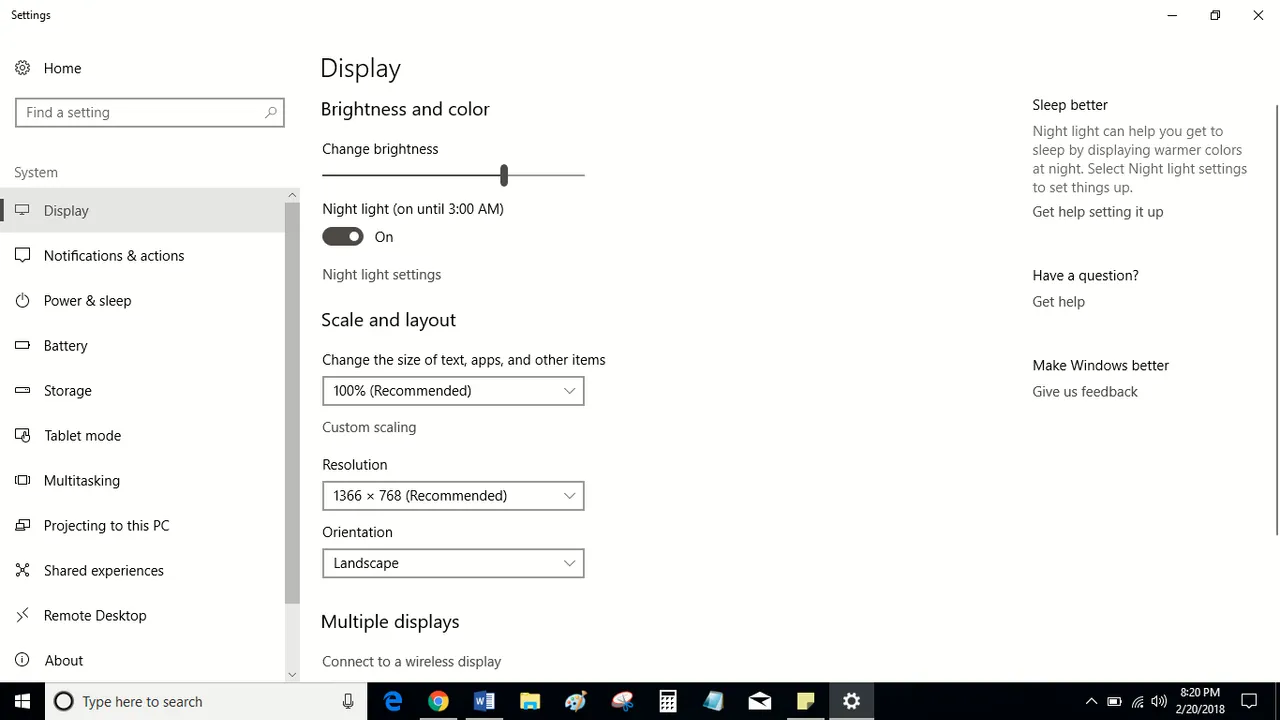
Here you can see customizable settings for your NIght Light Mode. You may change the amount of blue light emitted by your screen, schedule the number of hours you want it on, or even have a preset time when you woud prefer to have it automatically on or off.
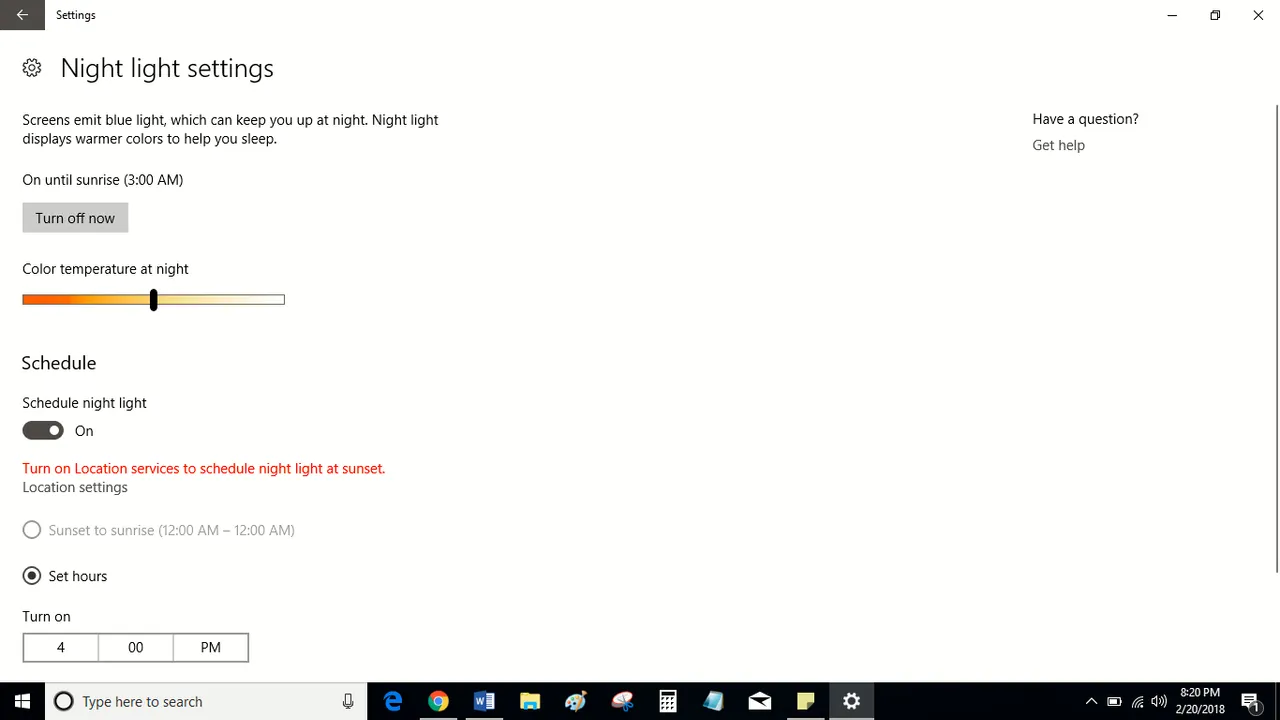
I make sure to turn it on everytime I use my laptop and only to turn it back off when I need to do something which requires my full attention. This way, I can focus really well and avoid getting sleepy. After which I turn it back on when I'm just browsing the internet. I did notice that it created less strain on my eyes and made it easier for me to rest my eyes.
For those who do not have the windows 10 update, fear not for there is always a solution. Blue Light Filter Apps are now common online. One PC app called f.lux can be downloaded at https://justgetflux.com/. If don't think it's practical, you could also purchase yourself a yellow tinted glass which blocks blue light although I am pretty sure no one would go through that end. Simply adjusting your screen time or the amount of time spent in front of computer screens may also help. Having frequent breaks give your eyes a rest from the light.
I hope you guys can find means to decrease the amount of blue light that your devices emit. I found it to be really helpful. I even have a similar action for my mobile phone right now. It looked very dark and yellowish at first but my eyes have grown to be acquainted with the look. In fact, I find the filter very relaxing as compared to the super bright white light that I usually see.
Sources:
How To Use Blue Light Filter In Windows 10 And Save Your Eyes From Strain
Blue Light: It's Both Bad And Good For You
Blue Light and Your Eyes
#BLUELIGHTEXPOSED
